-
 Bitcoin
Bitcoin $114400
0.68% -
 Ethereum
Ethereum $3550
2.48% -
 XRP
XRP $3.001
4.99% -
 Tether USDt
Tether USDt $0.9999
0.01% -
 BNB
BNB $757.6
1.46% -
 Solana
Solana $162.9
1.07% -
 USDC
USDC $0.9998
0.00% -
 TRON
TRON $0.3294
0.91% -
 Dogecoin
Dogecoin $0.2015
2.46% -
 Cardano
Cardano $0.7379
2.01% -
 Stellar
Stellar $0.4141
8.83% -
 Hyperliquid
Hyperliquid $37.83
-1.91% -
 Sui
Sui $3.454
0.76% -
 Chainlink
Chainlink $16.62
3.53% -
 Bitcoin Cash
Bitcoin Cash $554.6
2.84% -
 Hedera
Hedera $0.2486
3.91% -
 Ethena USDe
Ethena USDe $1.001
0.00% -
 Avalanche
Avalanche $21.95
3.34% -
 Toncoin
Toncoin $3.563
-2.85% -
 Litecoin
Litecoin $112.7
2.65% -
 UNUS SED LEO
UNUS SED LEO $8.977
0.13% -
 Shiba Inu
Shiba Inu $0.00001232
1.85% -
 Uniswap
Uniswap $9.319
2.93% -
 Polkadot
Polkadot $3.632
1.38% -
 Monero
Monero $307.2
2.36% -
 Dai
Dai $0.9997
-0.03% -
 Bitget Token
Bitget Token $4.340
0.91% -
 Pepe
Pepe $0.00001048
1.07% -
 Cronos
Cronos $0.1348
3.26% -
 Aave
Aave $261.5
1.93%
How does NFT Interdisciplinary Applications combine technologies from different fields?
NFTs, powered by blockchain's decentralized nature, integrate with AI, AR/VR, and gaming, creating innovative applications but facing interoperability and scalability challenges.
Mar 05, 2025 at 12:48 am
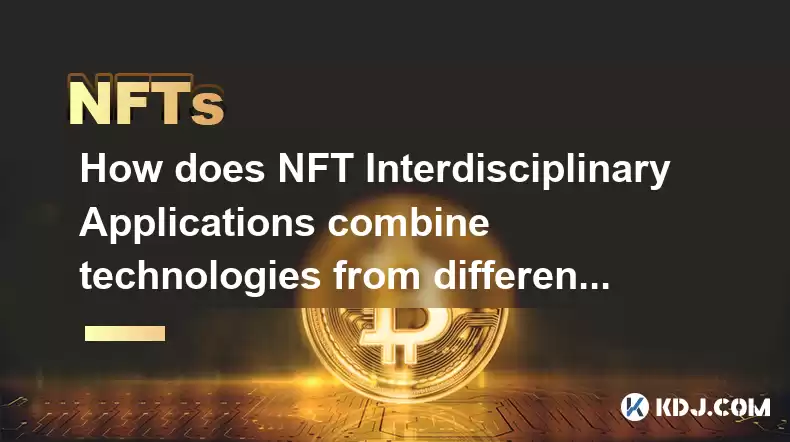
Key Points:
- NFTs' core functionality, representing unique digital ownership, integrates with diverse technologies.
- Blockchain's decentralized nature underpins NFT security and transparency across applications.
- Interoperability challenges exist but are addressed through bridging solutions and standards.
- Data management, security protocols, and user experience vary across applications.
- The future of NFT interdisciplinary applications hinges on addressing scalability and regulation.
How Does NFT Interdisciplinary Applications Combine Technologies from Different Fields?
Non-Fungible Tokens (NFTs) are revolutionizing how we interact with digital assets. Their unique properties, enabled by blockchain technology, allow for the creation of verifiable scarcity and ownership of digital items. This inherent characteristic opens up possibilities for combining NFTs with various technologies, creating innovative interdisciplinary applications.
Blockchain Technology as the Foundation:
The foundational technology for NFTs is blockchain. Its decentralized and immutable nature ensures the security and transparency of NFT transactions. This is crucial for maintaining the integrity of ownership records and preventing counterfeiting. Different blockchain networks, such as Ethereum, Solana, and Polygon, each offer varying levels of scalability and transaction fees, influencing the choice of platform for specific NFT applications.
Integrating with Artificial Intelligence (AI):
AI plays a significant role in enhancing NFT applications. AI algorithms can be used to generate unique NFT art, assess the value of NFTs based on various factors, and even personalize user experiences within NFT-based platforms. For example, AI can generate variations of an NFT artwork, creating a collection with subtle differences, increasing collectibility and value.
The Role of Augmented Reality (AR) and Virtual Reality (VR):
AR and VR technologies enhance the user experience of NFTs by providing interactive and immersive ways to engage with digital assets. Imagine viewing an NFT digital artwork in your living room using AR, or exploring a virtual gallery showcasing your NFT collection in VR. This integration significantly boosts user engagement and makes NFTs more tangible.
Game Development and NFTs:
The gaming industry has embraced NFTs to create in-game assets with verifiable ownership. Players can own, trade, and even sell their unique game items, creating new economic models within the gaming ecosystem. This integration fosters a sense of ownership and creates new revenue streams for game developers. Challenges remain in balancing game mechanics with the volatile nature of NFT markets.
Supply Chain Management and NFTs:
NFTs can revolutionize supply chain management by providing transparent and verifiable tracking of products throughout their lifecycle. Each product can be associated with an NFT, recording its origin, journey, and authenticity. This helps combat counterfeiting and ensures consumer trust in the authenticity of products. The integration requires robust data management systems to support the large volume of data involved.
Digital Identity and NFTs:
NFTs can be used to represent digital identities, providing a secure and verifiable way to prove ownership of personal data and credentials. This could revolutionize online identity verification, simplifying processes and improving security. Privacy concerns and regulatory hurdles need to be carefully considered in this application.
Decentralized Finance (DeFi) and NFTs:
DeFi protocols are integrating NFTs to create unique financial instruments. NFTs can represent fractional ownership of assets, allowing for increased liquidity and accessibility to investments. This integration is still evolving, with challenges related to regulatory compliance and the inherent volatility of the DeFi space.
Challenges in NFT Interdisciplinary Applications:
- Interoperability: NFTs on different blockchains may not be easily transferable or compatible. Solutions like cross-chain bridges are being developed to address this.
- Scalability: The transaction costs and processing speeds of some blockchains can limit the scalability of NFT applications. Layer-2 solutions and new blockchain technologies are tackling this issue.
- Regulation: The regulatory landscape for NFTs is still developing, creating uncertainty for developers and users. Clearer regulatory frameworks are needed to foster innovation and protect consumers.
- Security: While blockchain technology offers security, vulnerabilities can exist in smart contracts and other aspects of NFT applications. Robust security audits and practices are crucial.
Common Questions and Answers:
Q: What are the benefits of combining NFTs with other technologies?
A: Combining NFTs with other technologies enhances user experience, increases security, and creates new revenue streams and economic models, especially in areas like gaming, art, and supply chain management.
Q: What are the challenges in developing interdisciplinary NFT applications?
A: Challenges include interoperability issues across different blockchains, scalability limitations, regulatory uncertainty, and security vulnerabilities in smart contracts.
Q: What is the future of NFT interdisciplinary applications?
A: The future likely involves addressing scalability and interoperability challenges, navigating regulatory frameworks, and exploring new applications across various sectors. The potential for innovation is vast, with new combinations of technologies continuously emerging.
Q: How do different blockchain networks impact NFT applications?
A: Different blockchains offer varying levels of transaction speed, security, and cost. The choice of blockchain impacts the scalability and cost-effectiveness of NFT applications.
Q: What role does AI play in NFT applications?
A: AI can generate unique NFTs, assess their value, and personalize user experiences, creating more engaging and dynamic interactions.
Disclaimer:info@kdj.com
The information provided is not trading advice. kdj.com does not assume any responsibility for any investments made based on the information provided in this article. Cryptocurrencies are highly volatile and it is highly recommended that you invest with caution after thorough research!
If you believe that the content used on this website infringes your copyright, please contact us immediately (info@kdj.com) and we will delete it promptly.
- Cryptocurrency, Altcoins, and Profit Potential: Navigating the Wild West
- 2025-08-04 14:50:11
- Blue Gold & Crypto: Investing Disruption in Precious Metals
- 2025-08-04 14:30:11
- Japan, Metaplanet, and Bitcoin Acquisition: A New Era of Corporate Treasury?
- 2025-08-04 14:30:11
- Coinbase's Buy Rating & Bitcoin's Bold Future: A Canaccord Genuity Perspective
- 2025-08-04 14:50:11
- Coinbase's Buy Rating Maintained by Rosenblatt Securities: A Deep Dive
- 2025-08-04 14:55:11
- Cryptos, Strategic Choices, High Returns: Navigating the Meme Coin Mania
- 2025-08-04 14:55:11
Related knowledge
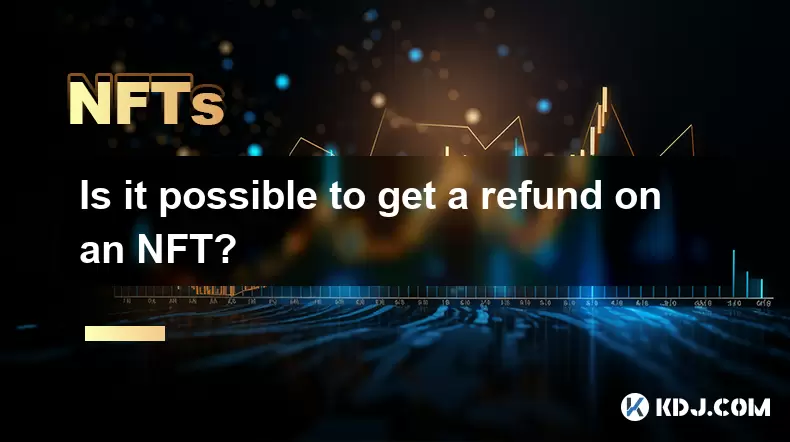
Is it possible to get a refund on an NFT?
Jul 21,2025 at 08:35pm
Understanding NFT Transactions and RefundsWhen you purchase an NFT (Non-Fungible Token), the transaction is typically recorded on a blockchain, making...
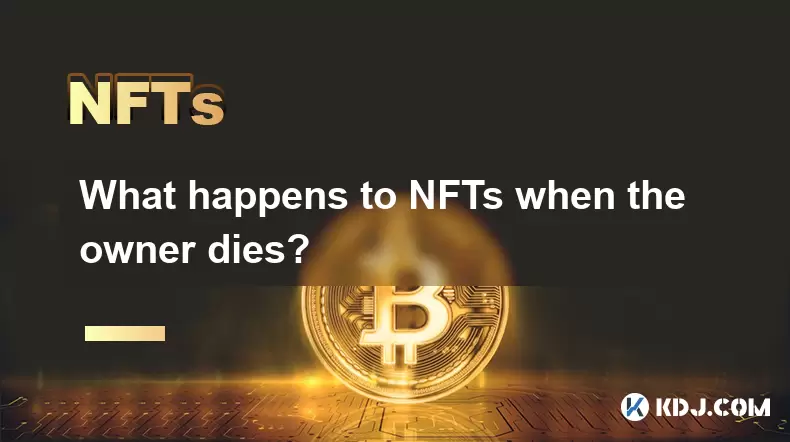
What happens to NFTs when the owner dies?
Jul 22,2025 at 02:43pm
Legal Ownership and Digital AssetsWhen an individual owns NFTs, the question of what happens to these assets upon their death is a pressing one. NFTs ...
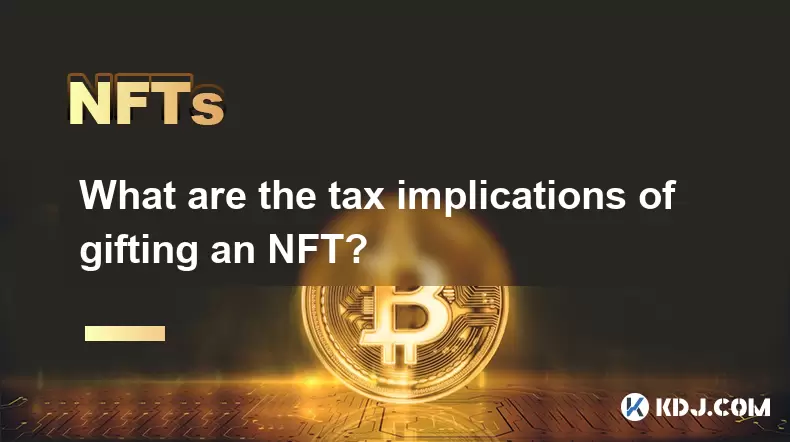
What are the tax implications of gifting an NFT?
Jul 19,2025 at 04:21am
Understanding the Basics of NFT GiftingGifting a Non-Fungible Token (NFT) involves transferring ownership from one individual to another without recei...
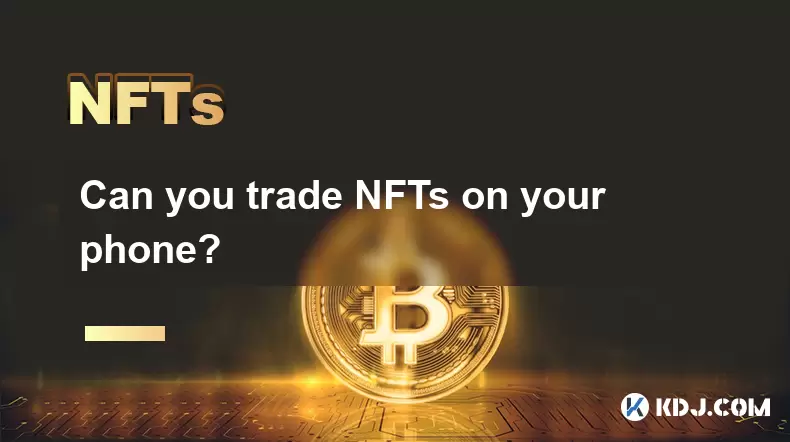
Can you trade NFTs on your phone?
Jul 18,2025 at 04:29am
Trading NFTs on Mobile DevicesYes, you can trade NFTs on your phone, and the process has become increasingly streamlined thanks to a variety of mobile...
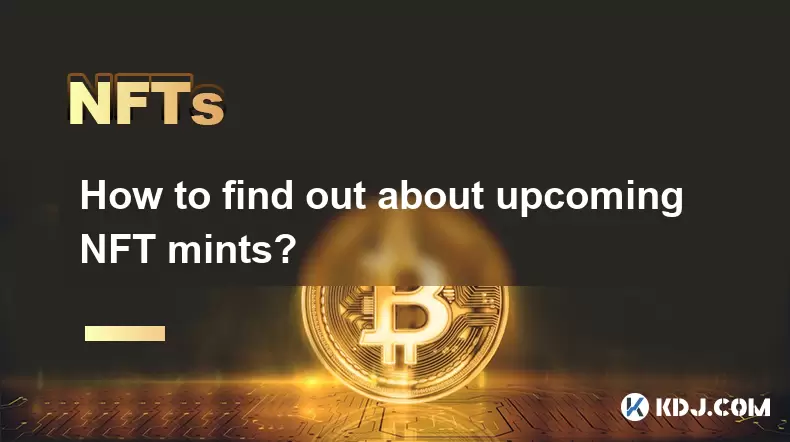
How to find out about upcoming NFT mints?
Jul 18,2025 at 11:50am
Exploring NFT Minting OpportunitiesUnderstanding the landscape of upcoming NFT mints is crucial for collectors, investors, and creators who wish to st...
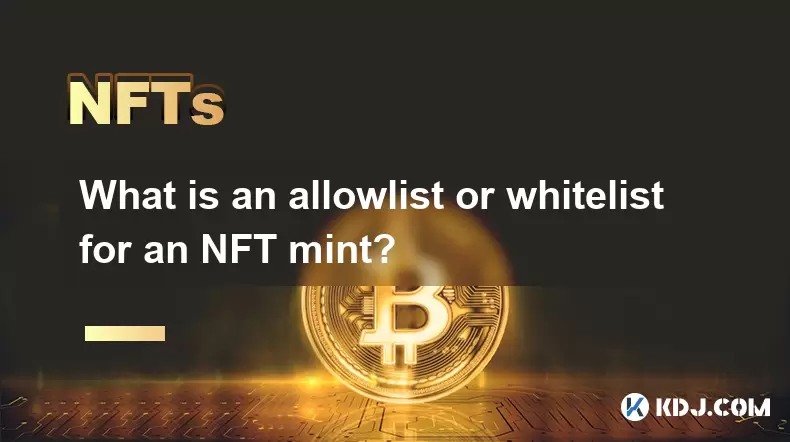
What is an allowlist or whitelist for an NFT mint?
Jul 20,2025 at 07:14pm
Understanding the Concept of an Allowlist for NFT MintingAn allowlist, also commonly referred to as a whitelist, is a mechanism used in the NFT mintin...

Is it possible to get a refund on an NFT?
Jul 21,2025 at 08:35pm
Understanding NFT Transactions and RefundsWhen you purchase an NFT (Non-Fungible Token), the transaction is typically recorded on a blockchain, making...

What happens to NFTs when the owner dies?
Jul 22,2025 at 02:43pm
Legal Ownership and Digital AssetsWhen an individual owns NFTs, the question of what happens to these assets upon their death is a pressing one. NFTs ...

What are the tax implications of gifting an NFT?
Jul 19,2025 at 04:21am
Understanding the Basics of NFT GiftingGifting a Non-Fungible Token (NFT) involves transferring ownership from one individual to another without recei...

Can you trade NFTs on your phone?
Jul 18,2025 at 04:29am
Trading NFTs on Mobile DevicesYes, you can trade NFTs on your phone, and the process has become increasingly streamlined thanks to a variety of mobile...

How to find out about upcoming NFT mints?
Jul 18,2025 at 11:50am
Exploring NFT Minting OpportunitiesUnderstanding the landscape of upcoming NFT mints is crucial for collectors, investors, and creators who wish to st...

What is an allowlist or whitelist for an NFT mint?
Jul 20,2025 at 07:14pm
Understanding the Concept of an Allowlist for NFT MintingAn allowlist, also commonly referred to as a whitelist, is a mechanism used in the NFT mintin...
See all articles

























































































